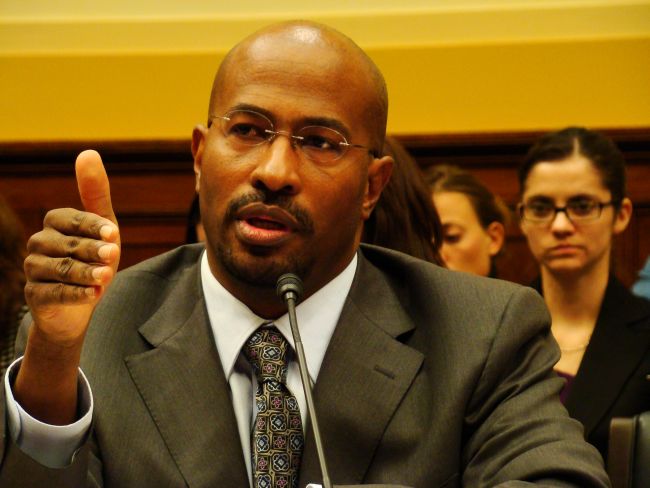Advocates of regulatory environmentalism dominated the spin wars last month when the monumental American Clean Energy and Security Act of 2009 (ACES) — aka the carbon cap-and-trade bill assembled by Reps. Henry Waxman (D-Calif.) and Edward Markey (D-Mass.) — passed out of the House Energy and Commerce Committee.
Climate politics “realists” lauded “historic action” (in the words of Al Gore) on a bill that would at last “establish comprehensive national limits on the pollution that causes global warming” (in the words of Dan Lashof of the Natural Resources Defense Council). Meanwhile, cap-and-trade fans made of sterner stuff complained that the bill’s target for an initial 17-percent reduction from 2005 levels of greenhouse-gas emissions by 2020 was far too weak and decried Waxman and Markey’s massive giveaways of emissions permits to polluting industries.
In short, the initial mixed verdict on ACES was issued almost exclusively by the proponents of regulatory and carbon pricing solutions to America’s climate and energy-security challenge.
 But there is another standpoint from which to assess ACES, one less prominent in Washington circles, and that is to ask what the bill does to promote clean energy innovation and game-changing technology breakthroughs.
But there is another standpoint from which to assess ACES, one less prominent in Washington circles, and that is to ask what the bill does to promote clean energy innovation and game-changing technology breakthroughs.
Strangely secondary in the carbon discourse, the needs of the technologists, the inventors, the entrepreneurs, and the economic-development practitioners ought to emerge as at least an equal priority to regulatory responses in the nation’s struggle to decarbonize its economy.
As a recent report issued by my group at the Brookings Institution argues, America needs to catalyze and massively commercialize — very soon — truly transformative scientific and technological breakthroughs if it is going to have any chance of securing the 80-percent greenhouse-gas emissions cuts needed by mid-century to stave off really disruptive environmental breakdowns.
And that applies even if the nation can get a strong regulatory and pricing cap in place in the next few years. Over the next four decades, after all, global energy demand is expected to triple. But world emissions must be cut by half or more. All of which means that America and the world must change the game. America, in short, must move aggressively to develop and harness a portfolio of truly scalable clean energy sources — which we do not now have — and ensure that they are affordable enough to deploy throughout the world.
Consequently, it matters hugely whether or not the Waxman-Markey bill (or Congress through the standard appropriations channels) invests deeply enough in clean energy R&D and technology development and deployment to catalyze the needed inventions over the next 40 years.
So how are we doing? On the innovation front, Waxman-Markey must be deemed an important start, a move in the right direction, but not there yet.
Waxman and Markey deserve credit, given the circumstances, for setting aside some 16 percent of the hundreds of billions of dollars of cap-and-trade revenue that the bill would generate for such items as new auto technology, carbon-capture-and-storage work, and other clean energy technology development and deployment. Such public investments will be crucial to jump-starting the innovation process, creating clean energy jobs, and upgrading the nation’s energy infrastructure in the presence of numerous market failures. Given the pressure of competing interests, reserving even that much of the bill’s revenue for innovation activities represents an important start.
Also noteworthy is the bill’s dedication of 1 percent of the bill’s permit revenue to the establishment of eight “Clean Energy Innovation Centers” — regional R&D hubs reminiscent of Brookings’ proposal for the nation to launch a network of energy discovery-innovation institutes (e-DIIs) designed to leverage the expertise of universities, national laboratories, industry, venture capital, and others in the transfer of powerful clean energy technologies into the marketplace.
Paralleling the Department of Energy’s FY 2010 proposal for the creation of eight “energy innovation hubs,” the Waxman-Markey centers represent an important affirmation of the importance of public investments in innovation, run through new commercialization-oriented paradigms. Of particular value in Waxman and Markey’s centers is their strong regional cast, and recognition that breakthroughs and their commercialization don’t automatically spring up and go nation-wide through university or federal laboratory work but instead require extensive synergistic interactions of scientists and technologists with local and global networks of firms, suppliers, investors, and preexisting industry “clusters.”
And yet, the innovation investments in the ACES bill that passed out of the Energy and Commerce Committee remain too small, largely because so many of the bill’s carbon-emission permits had to be given away free to ensure the bill’s passage. Assuming an average pollution allowance price of $15, ACES as currently written would generate just $9 billion annually for technology innovation activities, broadly defined, as notes an analysis by the Breakthrough Institute.
To be sure, $9 billion a year is hardly nothing, and would represent an important boost to the nation’s paltry current innovation flows. But the ACES innovation funding pales in view of that fact that my group at Brookings (and many other groups) has called for the nation to invest as much as $20 to $30 billion per year on energy R&D alone even as President Obama has called for investing $15 billion. And it’s doubly disappointing given that cap-and-trade revenues represent the nation’s best shot at finding the money to sufficiently fund innovation in the face of the punishingly tight budgets that will prevail for the foreseeable future.
The verdict, then, is mixed: Reps. Waxman and Markey merit praise for insisting upon crucial placeholders for innovation in their bill, but the accommodations extracted by the interest groups have left too little revenue behind for the most crucial use of cap-trade money — investments to accelerate the transition to a clean energy economy.
And so the way forward is clear: Notwithstanding the crush of competing interests, Congress must significantly enlarge the innovation component of whatever carbon program it cobbles together in the next year or two. So let’s say the cap-trade “to do” for the rest of the year in the House must be to defend the clean energy innovation outlays of ACES from marauding interest groups — and then perhaps double them. Fail in this, and the nation could gain a complicated carbon pricing scheme but blow its best opportunity to finance the breakthroughs needed to make clean energy cheap and so stave off massive environmental destabilization.
But that’s a goal for the next several years — or longer. In the meantime, the nation simply cannot afford to wait the two or three or six or seven years it will take to fix ACES and begin to direct cap-and-trade revenue into specific programs to boost energy innovation. And so Congress should engage now in the regular appropriations process. With engagement from the White House, the relevant committees should move now to embrace the Department of Energy’s 2010 budget request. Secretary Steven Chu’s first budget includes the outlines of a powerful energy innovation system for America that would broadly engage the pure-science community through the funding of Energy Frontier Research Centers, conduct “disruptive” research through ARPA-E, and start eight of its own “energy innovation hubs” for translational work to get new energy technologies out of the lab and into the market.
Congress should fund it all, this year. By doing that, the country could finally get started on putting in place the pieces of a serious, sophisticated push to make clean energy cheap and meaningfully slow climate change even as we wait for the crafting of the right carbon-pricing program.



